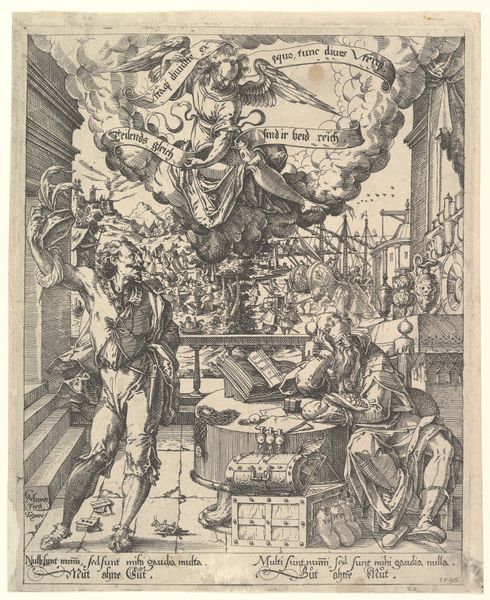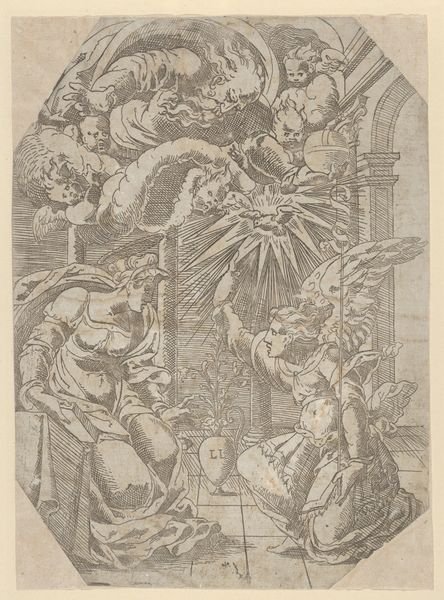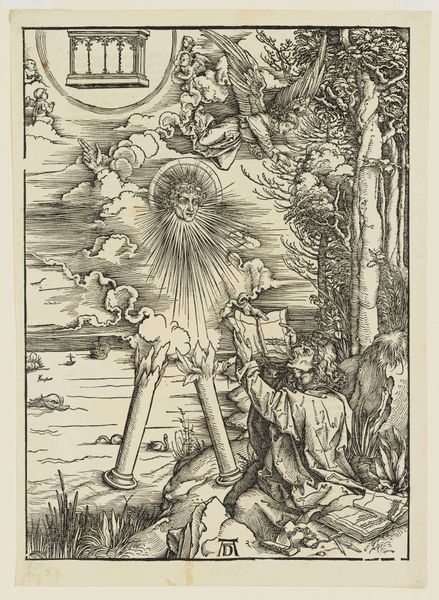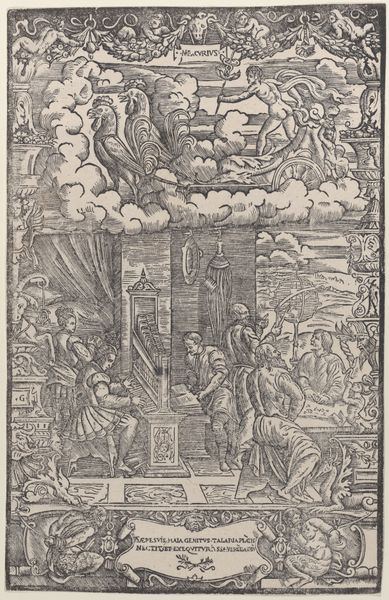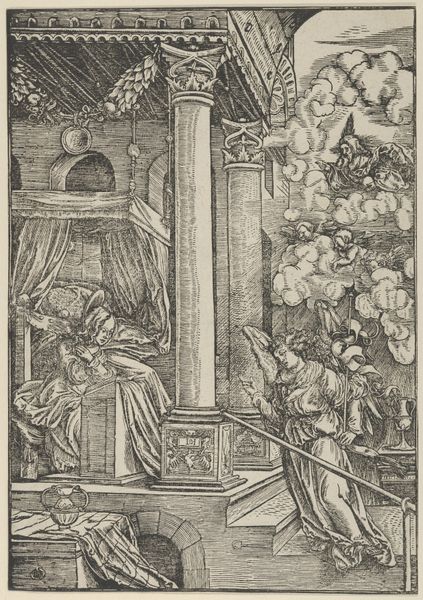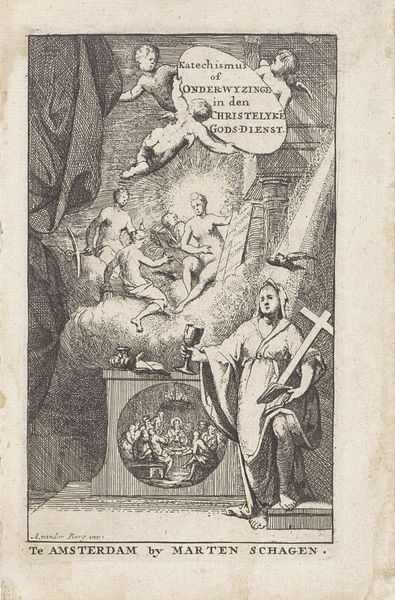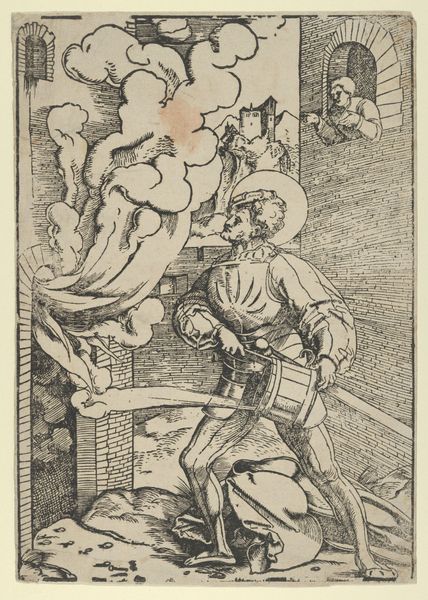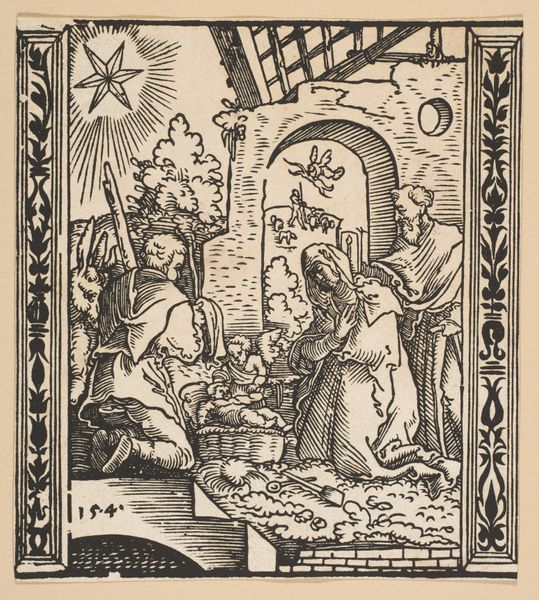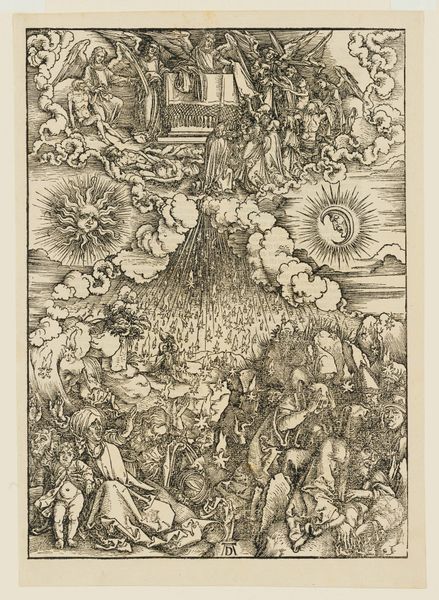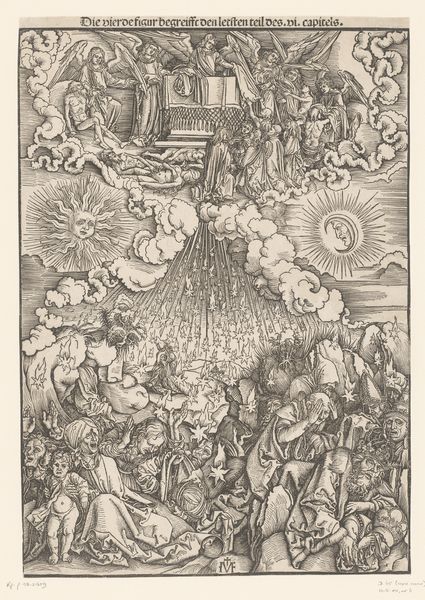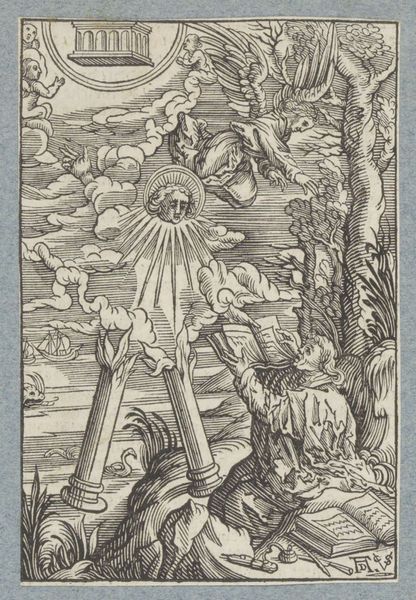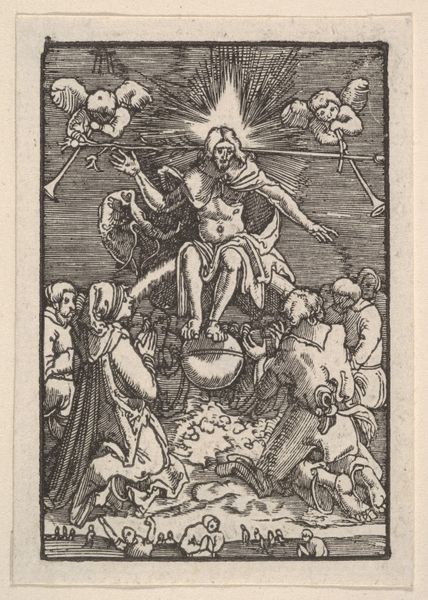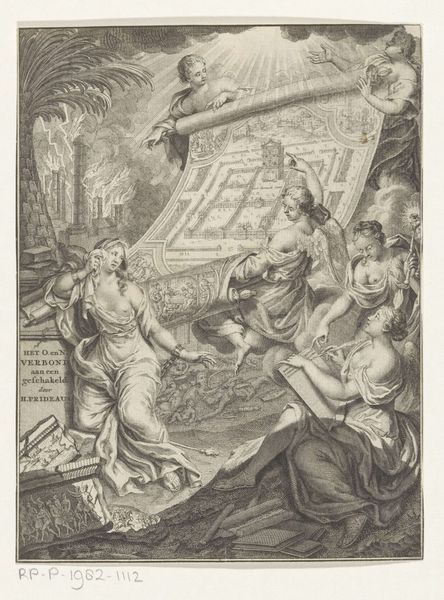
drawing, print, ink, woodcut
#
drawing
#
narrative-art
# print
#
figuration
#
ink
#
woodcut
#
history-painting
#
northern-renaissance
Dimensions: 6 5/8 x 5 7/16 in. (16.83 x 13.81 cm) (image)
Copyright: Public Domain
Curator: Take a look at this print called "The Annunciation," made with woodcut and ink around 1637, now residing at the Minneapolis Institute of Art. What springs to mind for you? Editor: Immediately, the sheer busyness. It's packed with visual information, every corner seems to be bursting with symbolism, or just…stuff! The harsh lines of the woodcut intensify the sense of urgency, wouldn’t you say? Curator: Absolutely. The anonymous artist is clearly working within the Northern Renaissance tradition, where detailed symbolism was very significant. You can see it in the lilies held by Gabriel, representing Mary's purity. Editor: And that beam of light piercing the architecture! What’s fascinating to me is how the image feels very immediate, almost as if you're overhearing a very important conversation through a wall with a big hole in it. And I find the addition of Chinese characters in a Biblical image really bizarre and wonderful. It feels a bit like a dream… or a very persistent thought. Curator: I agree. Look closer—the artist also includes other scenes from Christ’s life on the far left in the background! It’s almost cinematic in its scope, anticipating events to come. The iconographic layering tells the whole story in a single glance. Even those cherubic faces clustered near the ground lend a touch of ethereal whimsy to the momentous event. Editor: Yes, everything flows into everything else; it's unified, as a thought tends to be. It strikes me that despite the subject matter, there’s a real humanness here. Curator: It truly encapsulates the core belief in incarnation: spirit becoming tangibly and intimately human. It reminds me to seek the divine within ordinary spaces, within our own hearts, perhaps. Editor: Right. To allow the possibility for something huge to just show up in a room with bad brickwork! The "Annunciation" still resonates, speaking across time through symbol and dreamscape to convey mystery and hope.
Comments
minneapolisinstituteofart about 2 years ago
⋮
These illustrations, one time accompanied by Chinese text, are based on Jerome Nadal's Images from the Gospels (Antwerp, 1593), a sumptuously illustrated Latin treatise produced at the instigation of Saint Ignatius Loyola. The images are emblems, with key elements notated and explained in turn. For example, A represents God's declaration of Christ's incarnation, and B shows the angel Gabriel delivering the news to Mary. At the far right, D marks Mary's house in Loreto, which became a pilgrimage site promoted by the Jesuits. (According to legend, angels carried Mary's house from Nazareth to the Italian town of Loreto in 1291.) Creation is depicted in the small vignette in the sky marked F, and the Crucifixion, as explained in note G, reminds the viewer of Christ's redemptive sacrifice. For the most part, the Chinese woodblock cutters faithfully reproduced the original engravings, adopting many of the European pictorial conventions. Mary's prie-dieu, for example, appears convincingly three-dimensional, though the room behind her lacks depth. Reminiscent of Chinese art, the swirling clouds are described with bold calligraphic lines, to wonderful effect.
Join the conversation
Join millions of artists and users on Artera today and experience the ultimate creative platform.
